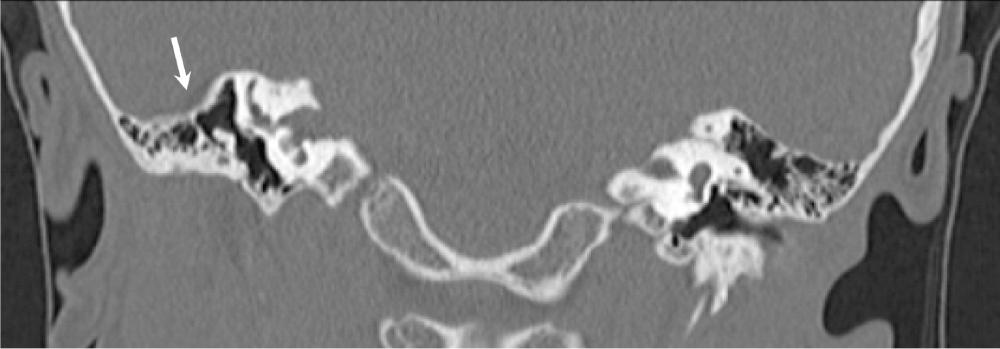Physical Address
304 North Cardinal St.
Dorchester Center, MA 02124
Computed tomography (CT) evaluation of the temporal bone with and without contrast enhancement shows bony erosion and adjacent soft tissue inflammation and/or abscess in cases of malignant external otitis.
Cholesteatoma has distinct imaging characteristics on magnetic resonance imaging (MRI). The lesion is isointense to hypointense on T1-weighted imaging, is intermediate on T2-weighted imaging, and does not enhance with addition of contrast medium. Most importantly, the lesion will restrict on diffusion-weighted imaging. MRI techniques for detection of residual cholesteatoma in lieu of staged surgery are evolving and promising.
MRI and CT are used in the evaluation of glomus tumors. CT is best to determine the degree of osseous involvement of the jugular bulb and discriminates between a glomus tympanicum or glomus jugulare. MRI best defines the soft tissue extent of disease that is in the neck, the extent that is intracranial, and the degree of carotid involvement.
High-resolution T2-weighted imaging is the study of choice for screening for acoustic neuromas.
The diagnosis of superior semicircular canal dehiscence is made using thin-section, high-resolution CT. The dehiscent segment must be greater than 2 mm. The scan can be reformatted in the plane of the superior canal, and the dehiscent area can be measured directly on these reconstructions.
The temporal bone is a complex and variable region of the skull base. Anatomic variations in the size and position of normal structures are common and should not be mistaken for a pathologic process. Many of these findings are asymptomatic and only discovered as an incidental finding; however, knowledge of these common anatomic variations is important in formulating a diagnosis and treatment plan.
Variability in mastoid pneumatization is common. Pneumatization may be extensive involving the petrous apex, mastoid tip, squamosal temporal bone, or even extending into the adjacent zygoma or occipital bone, whereas in some, pneumatization may be limited to a single antral cell ( Fig. 135.1 ). The nonpneumatized portions of the temporal bone may be made up of solid or diploic bone. Adult bone marrow is hyperintense on T1-weighted (T1W) imaging and hypointense on T2-weighted (T2W) imaging; this should be distinguished from fluid or from pathologic processes, which will often have high signal intensity on T2W imaging.

The tegmen is the roof of the mastoid and attic of the middle ear. The tegmen is oriented in the horizontal plane immediately inferior to the arcuate eminence. A low-hanging tegmen, represented by the floor of the middle fossa deepening to form a groove lateral to the attic and labyrinth, is not an uncommon finding ( Fig. 135.2 ).

Similar to the mastoid, variations in pneumatization of the petrous apex are common. Asymmetric pneumatization, marrow replacement, and trapped fluid are identifiable based on characteristic imaging qualities. Whenever possible, computed tomography (CT) or fat-suppressed T1W magnetic resonance imaging (MRI) should be used to distinguish these lesions from pathologic processes. These lesions are considered “leave me alone” lesions and are generally not managed surgically.
Become a Clinical Tree membership for Full access and enjoy Unlimited articles
If you are a member. Log in here